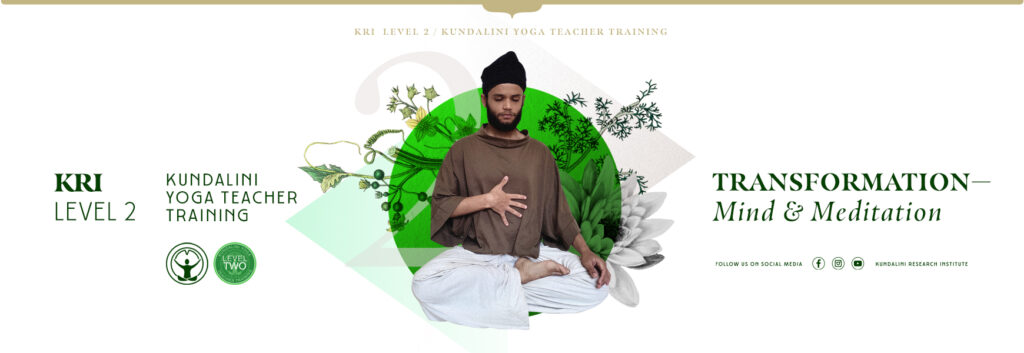A deep dive into Transformation and the Level Two KRI program
The Level Two Kundalini Yoga Teacher Training is called Transformation. This is the stage in which we need to transform as we come from the Level One training and begin working our way towards the Level Three journey of “Mastery” . But what does transformation really mean?
The term transform says much about what we have to go through. We can further understand this term by gaining clarity on what IT IS NOT:
- Uniform: Even though we all have a similar appearance of wearing white and head cover, each of us have our own form. Just as the 10 Sikh Gurus shared the same light shining through them, and yet had very different characteristics. We may be inspired by many teachers but need not copy them, we need to become our own-Selves.
- Conform: It is not about conforming to a set of rules on what it means to be a teacher. Yes, there are rules such as the code of conduct, that are there to guide us and protect both us and the students. But there are no rules, no clearly defined parameters, no marked definition to what a Teacher is. The full potential of who we can become needs to be realised by inner experience, not by conforming to outer guidelines.
- Perform: It is not about performance. We’re not better yogis just because we may do two and a half hours of Sodarshan Chakra Kriya or how many 1000-day sadhanas have we completed. What we have done does not determine who we are.
- Reform: It is not about being a rebel. Arriving into Kundalini Yoga and disagreeing with some practices or teachings, thinking we have the answer for these times we are living in. It is not about trying to bring a reform so we can fit into it. Nor is it to completely reform who we are to pursue an image of the ideal yogi, putting every aspect of ourselves under the microscope with the intolerance of perfectionists.
- Inform: It is not about how well informed we are, nor about how much information we have accumulated over the years. Do we lack more information or do we lack intuitive discernment of what matters? It is not about knowledge, it is about Self-Knowledge.
If we look in a dictionary “Online Etymology Dictionary”, the word trans means “across, beyond, through, on the other side of”. It is interesting that this sound trans contains one of the three compound sounds that appear in the Sanskrit alphabet: Ksha, tra, and gnya. This particular sound, tra, is of great importance considering it appears in words such as tantra and mantra. It often takes the meaning of “to save and protect“ and we can extend the meaning through similarity from other English words such as traverse and trap. Exploring deeper the term mantra, for example, we find man coming from manas (one of the impersonal aspects of the mind) and tra. We could say that mantras are a way to trap the mind, to cross the mind, to protect the mind, or even to protect our-Selves from the mind.
Understanding this, we can now reflect on how the Level Two module of Mind and Meditation deals with the transformation of our mind, our relationship to mind, and probably also our practice of meditation.
If transform is about going beyond and across the form, what forms does our mind hold? It is our beliefs, our values, our default judgements, our structured thought patterns. Note then that the Level Two training is not focused so much into deforming false beliefs, reforming old values, informing better judgements and forming new thought structures. Rather, it is about getting to know the present form of our mind, the strongest structures into which our mind operates. Then, taking those forms and cleaning them from any karmic tendency we may have, we shall aim to utilise its full potential as a bridge to cross the gap and connect to the formless Unknown beyond the veil. This is the process of meditation, where mantra is so particularly useful, not negating the mind but utilising it as an instrument to awaken our True Identity of Pure Consciousness, beyond form and structure.
Sat Naam
Ardaas Singh

